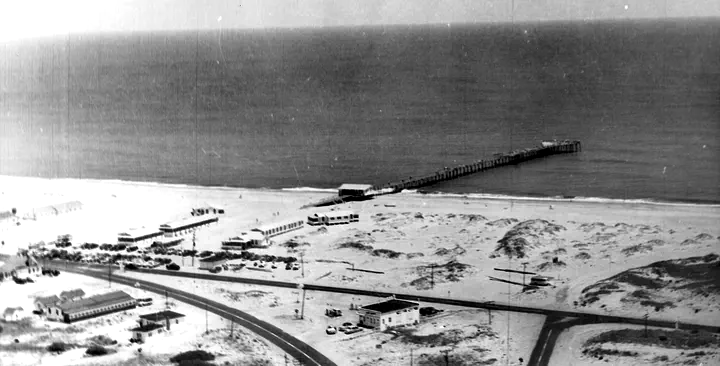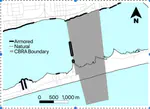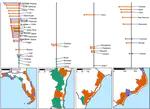Urban Development, Coastal Infrastructure and Policy
 Outer Banks in NC
Outer Banks in NC
The wind-swept, isolated beauty of coastal barriers has always attracted people. Coastal areas in general have undergone substantial population growth: from 1970 to 2010, the population of U.S. coastal counties increased by 34.8 million (39 percent). During this time, many of these isolated outposts of sand have undergone a boom in second-home and resort development (Crawford, et al., 2013), with coastal counties issuing an average of over 1300 building permits each day between 2000 and 2010 (Crossett, et al., 2013). The increase in coastal population strains the carrying capacities of coastal land and water. The low elevation, narrowness, and shifting sands of coastal barriers make them high-risk places for development. It is not uncommon for houses on coastal barriers to be washed away, rebuilt, and then destroyed again by a subsequent storm (Salvesen 2005). Growing populations and increased development result in greater damage from natural disasters and greater difficulty in evacuating coastal residents, as past coastal storms have vividly illustrated (e.g., hurricanes Sandy and Katrina).
For decades, the United States government has encouraged private development on coastal barriers through financial assistance for the construction of highways and bridges, water supply and wastewater treatment facilities, and beach stabilization projects (Glavovic and Smith, 2014; Burby, et al., 1999; Beatley, et al., 2002). Federal disaster assistance and flood insurance also have facilitated coastal development by transferring much of the risks and costs of development from the private sector to the public sector (DOI, 1983; Beatley, et al, 2002; Leichenko and Thomas, 2012). Significant literature –pertaining to coastal development as well as other hazardous areas such as floodplains – now argues that federal subsidies have perpetuated a cycle of subsidized development, destruction, and subsidized redevelopment (Berke et al., 2012). After a major coastal storm or hurricane sweeps across a coastal barrier, damaging or destroying homes, shops, roads, and water and sewer lines, federal disaster relief helps rebuild the damaged properties and infrastructure (Gillis and Barringer, 2012; Bagstad, et al., 2007; Burby, 2006).
This project aims to test the long-term effects of the withdrawal of development subsidies on development in coastal areas. Land markets respond to various kinds of signals about demand, supply, cost of construction, available tax credits, and subsidies. Growth controls – which can include development regulations or subsidy restrictions – are common local policy tools that have been shown to generallyincrease housing prices in the community (Elliot, 1981; Dowall and Landis 1982; and Katz and Rosen, 1987). While impacts on aggregate housing affordability depend upon the details of implementation, house value impacts of growth control policies are especially strong within the areas of control, making them a good indicator of policy effectiveness (Dawkins and Nelson 2002).
Collaborators
- Dr. Todd BenDor
- Dr. David Salvesen
- Kyle Onda
- Jordan Branham





